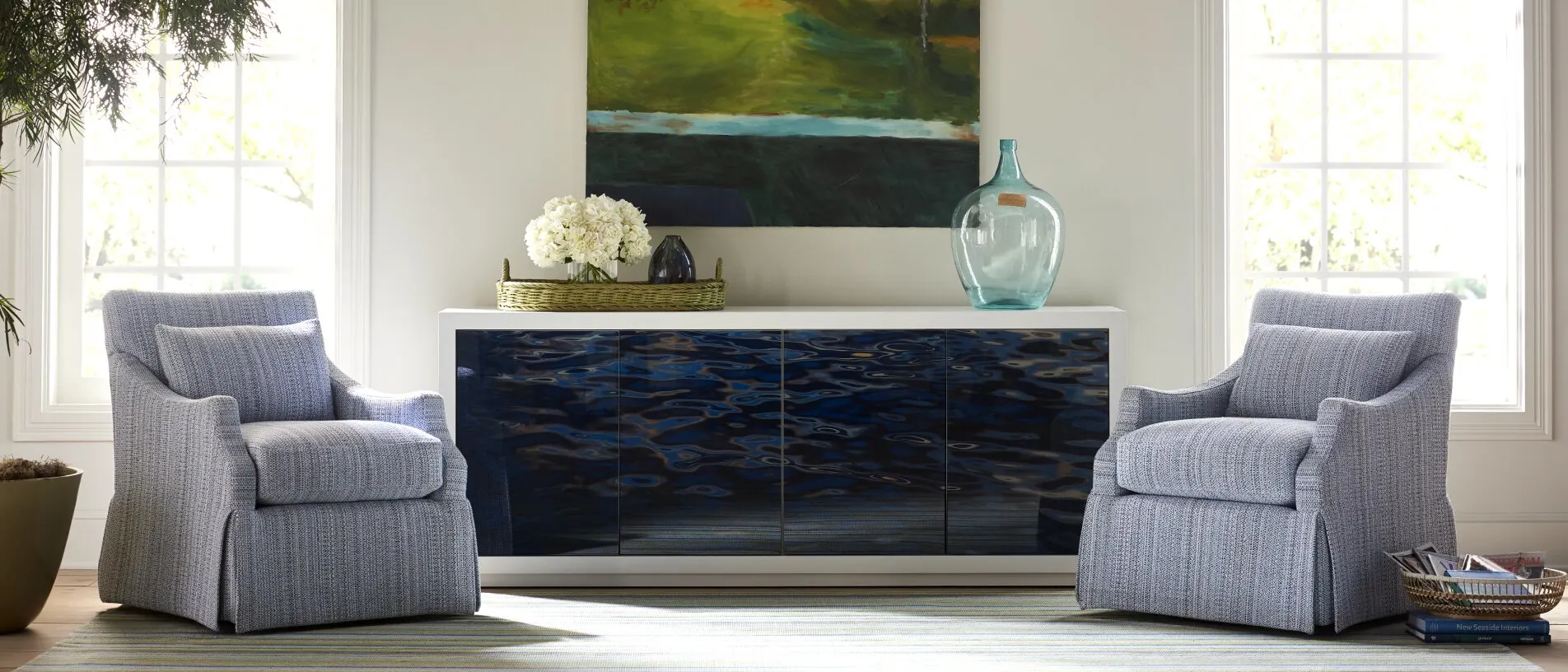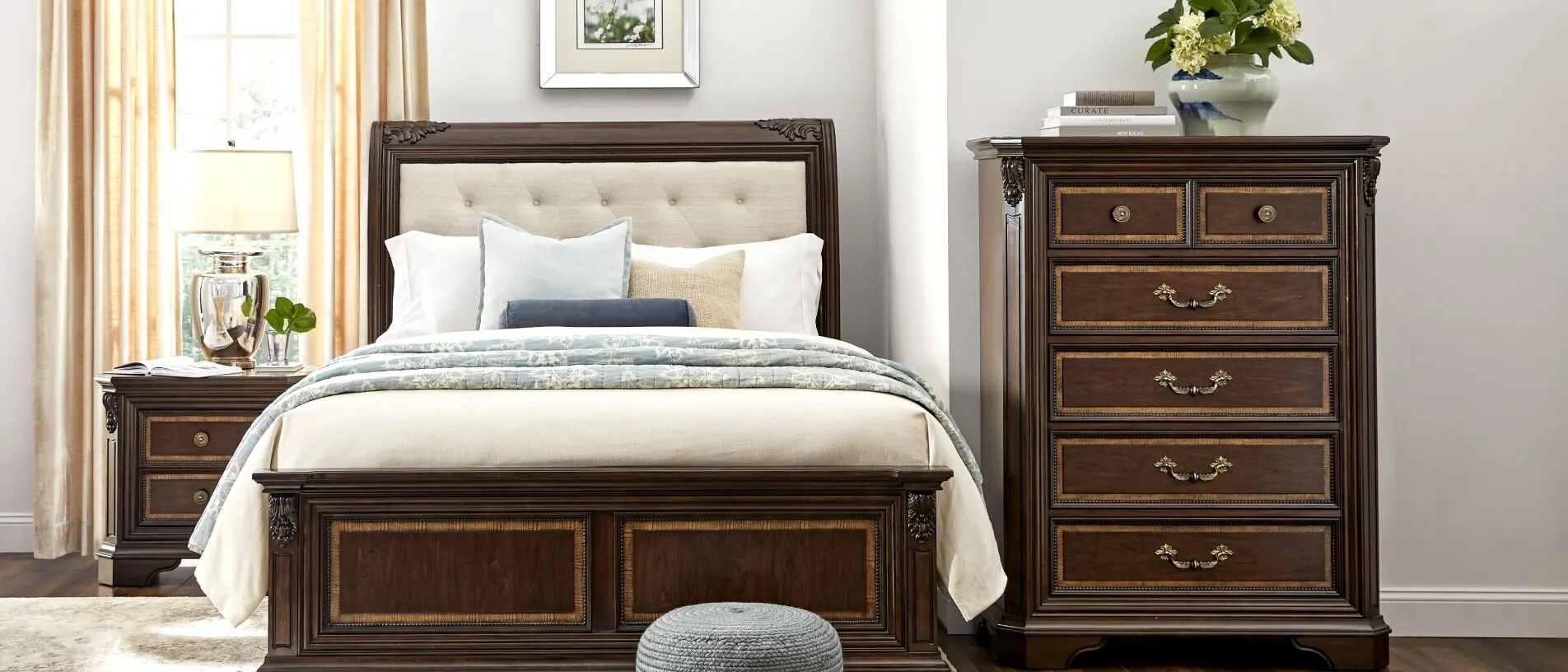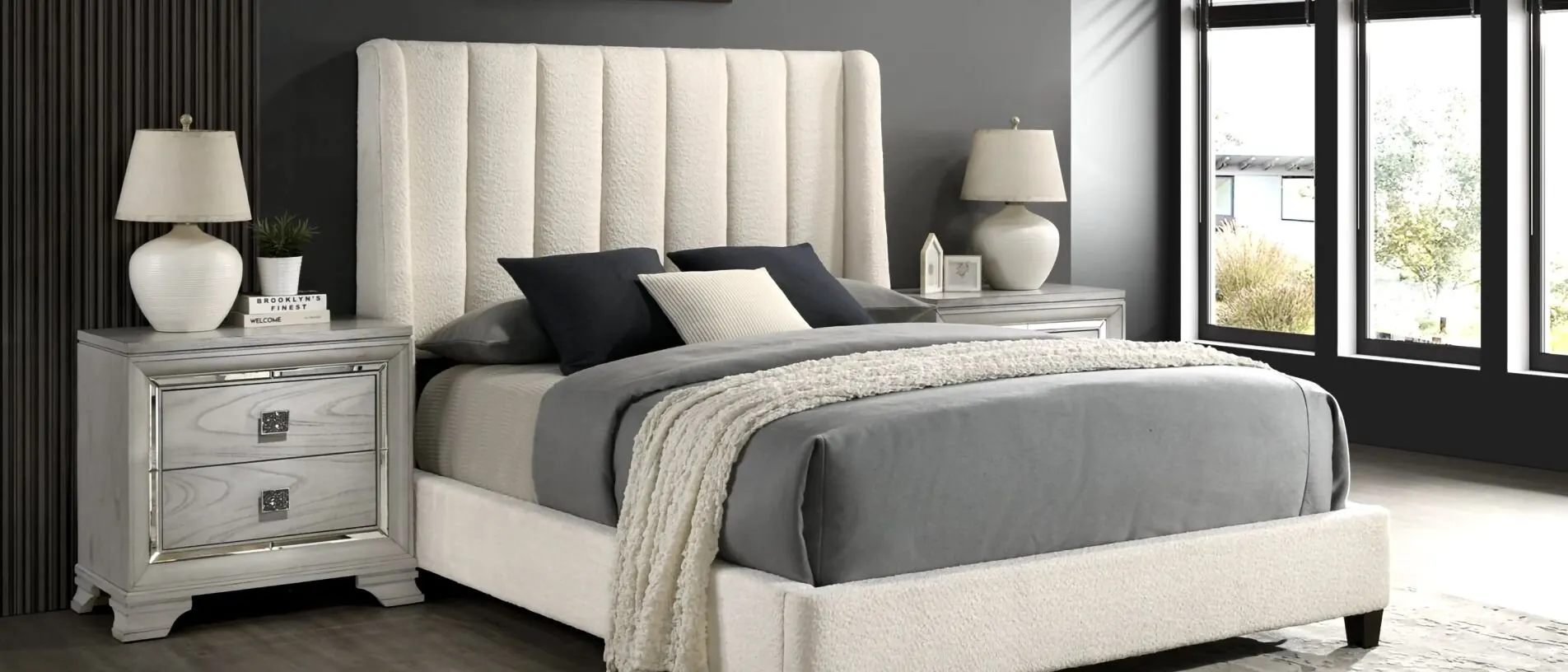You're on the list
By signing up, you agree to receive email marketing.


When decorating a new space, one of the first things to decide on is your preferred style. Home decor styles range from bright and eccentric to modest or calming — think retro, chic, farmhouse, coastal, and so on. Choosing a style at the outset will guide you through the decorating process so everything from your paint color to your linens fits perfectly.
Two of the most popular home styles are traditional and transitional. Although they might sound similar, these two styles are distinct, each making its own unique statement. This guide covers the ins and outs of traditional vs. transitional style to help you make the best choices for your space.
Traditional design combines comfort and elegance. Drawing on the influence of 18th- and 19th-century Europe, this style is practically timeless. It’s a great fit for someone who doesn’t base their décor style on the latest trends. However, modern traditional interior design is anything but outdated. The right combination of comfy furniture, polished wood tones, and vintage vibes create a welcoming space for any generation.
Transitional design is a bit more modern. Featuring sleek lines, neutral color schemes, and clean, open layouts, it bridges traditional and more contemporary looks. According to design experts, this style originated in the late 1960s in response to the mid century modern decor of the 1950s and has recently regained popularity in the early 2020s.
Debating between a traditional and transitional design? Both options create comfortable spaces that won’t go out of style. Here’s what you need to know about traditional and transitional designs when decorating your home.
Both traditional and transitional styles offer a modest take on home decor. Neither is particularly flashy, but while traditional style rooms lean toward the ornate, transitional rooms feature clean lines and uncluttered spaces.
Patterned curtains or draperies, gold frames, comfortable pillows, vintage art
A statement wall in a bold color, oil paintings, minimalist lighting, solid frames, throw pillows
You might have a clear picture of traditional furniture in mind, but what is transitional furniture? It's essentially a toned-down version of the same look.
Both styles prioritize comfort, meaning squishy cushions, pillows, and blankets are welcome. However, for a transitional room design, furniture should be simple and practical. If you’re going for traditional, don't hesitate to choose old-school pieces with plenty of character.
Dark leather sofas, polished wood tables, ornate rugs, hand-crafted styles
Comfortable, neutral-toned sofas and chairs, Scandinavian-styles, cushioned headboards, marble or granite
Both traditional and transitional styles use simple, natural colors. These aren’t the styles to choose if you’re going for a colorful living room! While traditional color schemes tend to be a bit darker, they often incorporate a tinge of gold or red to add some flare.
Transitional designs, on the other hand, are characterized by soft, light colors. For either style, the colors you choose should promote a relaxing atmosphere.
Dark brown, navy blue, emerald green, deep maroon, burnt gold
Coastal gray, eggshell, beige, charcoal, sea foam green


When it comes to your layout, both styles keep things straightforward. The main difference is that transitional rooms prioritize light and open space, while traditional interior design is a little busier.
In either style, you should arrange furniture for comfort and practicality — you want to be able to relax on a sofa while facing your friend in the armchair. Go for straight, symmetrical lines and clean angles.
Sofas and chairs squared for conversation
The mantle as the room's focal point
Hallways lined with bookshelves
Lamps in corners
An open-concept kitchen and living room
Furniture pushed against walls to create more floor space
Minimal shelving
Overhead or hanging lights


Whether you choose a traditional or transitional style, you can base your room plan on a few basic style elements. These elements are essentially the foundation of the style, meaning the “vibes” that set traditional and transitional rooms apart. Here are some ideas.
European influence, elegant details, valuable pieces
Quality over quantity, solid colors and lines, bright spaces, practical pieces
If you can’t decide which of these styles is right for your home, consider these factors.
Minimalist vs. maximalist: While both styles are fairly subtle, you’ll probably prefer a transitional room if you want to keep things clean and simple. Traditional will suit you better if you enjoy collecting vintage art and knickknacks.
Your space: Decorating a small space? A transitional style can help it feel open and bright. Want to make a big room feel cozier? Go traditional.
Your furniture: Take a look at the furniture you already have. You can use those old, heavy hand-me-downs in a beautiful traditional room or mix and match wood tones for a more transitional style.
Struggling to choose between traditional and transitional styles? Here’s the good news: You can mix elements of traditional and transitional home décor for a space that’s both practical and elegant.
For example, a traditional kitchen can add a touch of class to your open floor plan without becoming too crowded. To give your transitional living room some traditional character, consider adding a few old-world details, such as a vintage mirror or patterned curtains.
Whether you opt for traditional, transitional, or a mix of both, your home is guaranteed to be a comfortable and welcoming space. Both styles have withstood the test of time and will continue to do so even as trends change.
Remember, there are no strict rules for styling your home, so don’t hesitate to mix, match, and make it your own.
You're on the list
By signing up, you agree to receive email marketing.